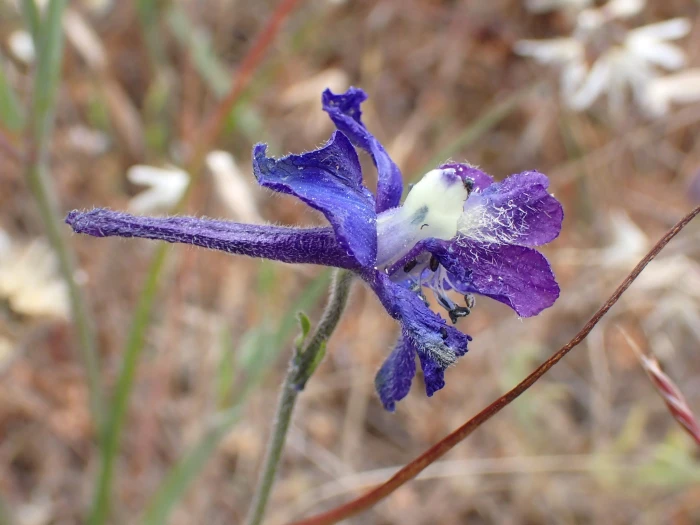Royal Larkspur
(Delphinium variegatum)
Royal Larkspur (Delphinium variegatum)
/
/

Cricket Raspet
CC BY 4.0
Image By:
Cricket Raspet
Recorded By:
Copyright:
CC BY 4.0
Copyright Notice:
Photo by: Cricket Raspet | License Type: CC BY 4.0 | License URL: http://creativecommons.org/licenses/by/4.0/ | Rights Holder: Cricket Raspet | Publisher: iNaturalist | Date Created: 2023-05-28T13:15:50-07:00 |
























Estimated Native Range
Climate Requirements for Frankfurt Am Main, Germany
| This Plant | Your Site | Plant Suitability for Your Location | ||
|---|---|---|---|---|
| • Precipitation | 7" - 78" | 26" | You should be able to grow this plant with no additional irrigation. | Excellent |
| • High Temp. | 67°F - 100°F | 77°F | Your summer temperatures are normal for this plant. | Excellent |
| • Low Temp. | 21°F - 49°F | 31°F | Your winter temperatures are normal for this plant | Excellent |
This plant should grow very well at your location without additional irrigation.
Summary
Delphinium variegatum, commonly known as Royal Larkspur, is a perennial herb native to California’s diverse habitats, including coastal prairies, mixed evergreen forests, chaparral, and the lower montane zones. It typically grows to about half a meter in height and is characterized by its erect form and deeply lobed leaves with hairy petioles. The inflorescence boasts up to 25 deep blue flowers, occasionally lighter or white, each with a spur that can be up to 1 inch long. Flowering occurs from April to July, with the blooms being quite showy and attractive to pollinators such as bees and butterflies.
Royal Larkspur is valued for its striking blue flowers, which make it a popular choice for wildflower gardens, native plant landscapes, and as a cut flower. It prefers full sun to light shade and requires well-drained soils; it is drought-tolerant once established, making it suitable for xeriscaping. While it is generally low-maintenance, it can be susceptible to fungal diseases in overly moist conditions. Gardeners should be aware that all parts of the plant are toxic if ingested. The subspecies ssp. kinkiense is federally listed as endangered, highlighting the importance of conservation efforts for this species.CC BY-SA 4.0
Royal Larkspur is valued for its striking blue flowers, which make it a popular choice for wildflower gardens, native plant landscapes, and as a cut flower. It prefers full sun to light shade and requires well-drained soils; it is drought-tolerant once established, making it suitable for xeriscaping. While it is generally low-maintenance, it can be susceptible to fungal diseases in overly moist conditions. Gardeners should be aware that all parts of the plant are toxic if ingested. The subspecies ssp. kinkiense is federally listed as endangered, highlighting the importance of conservation efforts for this species.CC BY-SA 4.0
Plant Description
- Plant Type: Herb
- Height: 1-3 feet
- Width: 1-1.5 feet
- Growth Rate: Moderate
- Flower Color: Blue, White
- Flowering Season: Spring
- Leaf Retention: Semi-deciduous
Growth Requirements
- Sun: Full Sun, Part Shade
- Water: Medium
- Drainage: Medium, Fast
Common Uses
Border Plant, Butterfly Garden, Deer Resistant, Potted Plant
Natural Habitat
Coastal prairies, mixed evergreen forests, chaparral, and lower montane zones in California
Other Names
Common Names: Coast Larkspur, Variable Larkspur
Scientific Names: Delphinium variegatum, Delphinium bicolor var. apiculatum, Delphinium variegatum f. typicum, Delphinium variegatum var. variegatum
GBIF Accepted Name: Delphinium variegatum